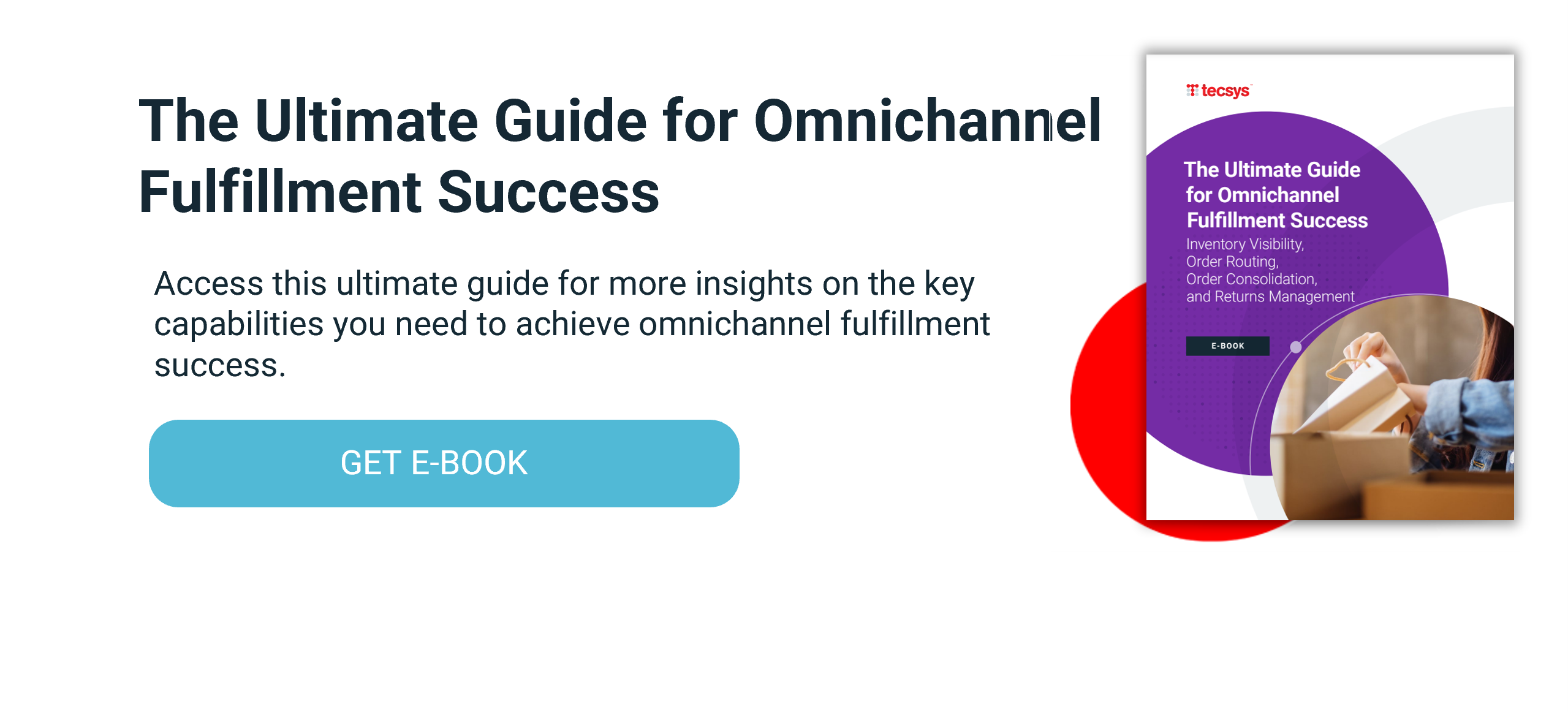Omnichannel Solutions: What to Look For?

Editor’s Note: This post was originally published in April 2017 and has been updated for freshness, accuracy and comprehensiveness.
It has been said that the last stand against Amazon is for retailers to leverage resources and infrastructure that Amazon doesn’t have. But what do retailers have that Amazon doesn’t? Physical bricks and mortar stores. There are many benefits that these could bring to the customer which many retailers take for granted.
Here are just a couple of the concepts that a true omnichannel solution can offer to retailers:
- Provide customers with multiple options for returning merchandise. It’s not worth bringing a package to the post office if you’re going to visit the store anyway. Plus, retailers can increase foot traffic by offering returns in store.
- Provide shoppers with an enhanced customer experience. By having multiple fulfillment locations close to the customer (i.e., stores), retailers can ship merchandise faster and cheaper.
The benefits of going with an omnichannel model are easy to see and choosing the right solution is the first step of your omnichannel journey.
4 Things You Should Look For in Your Omnichannel Solution
1. Flexibility Is Key
A true omnichannel retailer requires a flexible solution that can not only optimize the routing of orders to stores for fulfillment, but can also offer a flexible workflow for store associates to fulfill items. What does it mean to have a flexible solution? It means that a retailer can configure rules that take into consideration order parameters such as proximity of a fulfillment location to the consumer, staff or labor availability, whether or not orders are in a backlog pending store associates’ attention, the priority of the location and shipping costs, just to name a few.
2. Order Routing Logic
In addition to the above criteria, it is also important to consider any other unique conditions that may influence order routing logic. For example:
- Are you shipping a product that has any restrictions? Hazardous goods? (Specific destinations may not permit these.) Restricted goods? (Some goods contain parts or ingredients which certain states or provinces do not permit.)
- Is this a priority or loyalty customer? Is this a category of products that can only be shipped from a warehouse? Can your solution easily control for exceptions?
- Can your solution take into consideration a store’s capacity for fulfilling orders? Should store- based fulfilling consider all store inventory? Can your solution segment inventory positions made available to the online channel? Can your solution segment inventory positions made available to order routing, independent of what is available online?
3. Limited Development Required
This is only a subset of the types of scenarios that retailers must consider when pursuing an omnichannel strategy. It is important not to oversimplify the complexity of offering omnichannel. As shown above, there can be a significant amount of considerations, which demonstrates the need for a retailer to be extremely diligent when reviewing the capabilities of any omnichannel solution. The selection of a solution that has virtually unlimited flexibility out of the box, without the need to engage a developer or customize the solution will be critical to ensuring a retailer's success today and in the future.
4. Show ... Don't Just Tell
The only way for a retailer to be successful in ensuring that they are selecting the right solution is to define real-world use cases that they would like to implement and then ask vendors to perform a live demonstration of their use cases in action. As every retailer is different, it will not be possible to determine a true solution fit without going through an exercise of real-world simulations. Retailers must be careful about selecting solutions that may include business rules optimized to fulfill a very specific business scenario, but that may fail to offer flexibility within the rule itself. If the majority of the rule is hardcoded with limited opportunity to offer thresholds, metrics and/or conditions, it may be costly for a retailer to modify the routing engines behavior to meet their business needs. Once a retailer identifies that development work is necessary, considerations must be made for the increase in cost and thus reduced ROI as well as the agility for the retailer to adapt in a rapidly changing retail environment.
Futureproof Omnichannel Solution
Nobody knows what the future may hold. While today's retailer may wish to optimize based on a specific parameter, tomorrow's retailer may figure out a hybrid model that disrupts the market, which will force retailers to quickly modify their omnichannel strategy to react to market conditions. The cost of oil, for example, could dramatically change shipping costs, which in turn may influence a retailer's decisions around the routing logic they choose to adopt. A true omnichannel order management system (OMS) will not only improve customer satisfaction but will also improve a retailer's margins by reducing shipping costs.
Imagine increasing customer satisfaction while at the same time reducing fulfillment costs! Hopefully, this blog post provided some insight and opened some eyes into what it really takes to be a true omnichannel retailer. An omnichannel solution is a long-term investment. Retailers need to take their time to make sure they choose a flexible offering that can adapt to today’s rapidly changing world.

